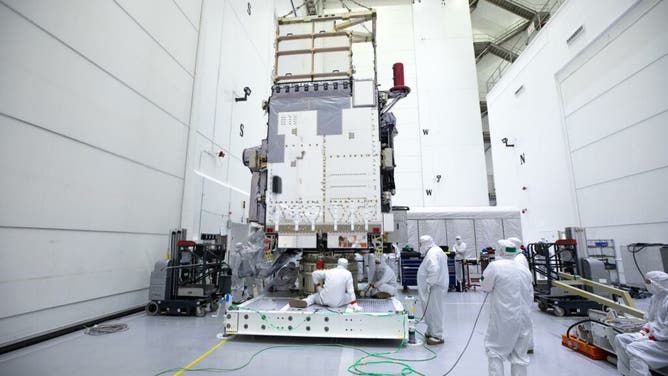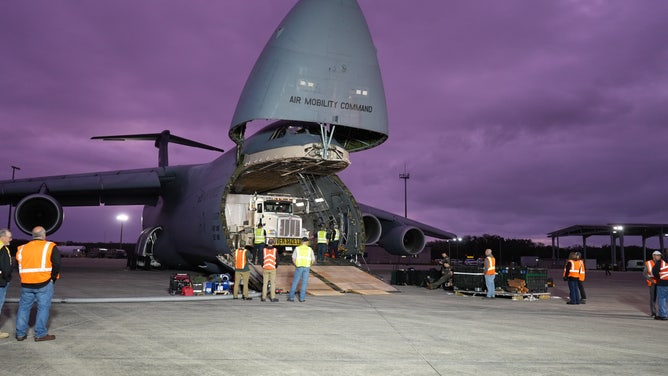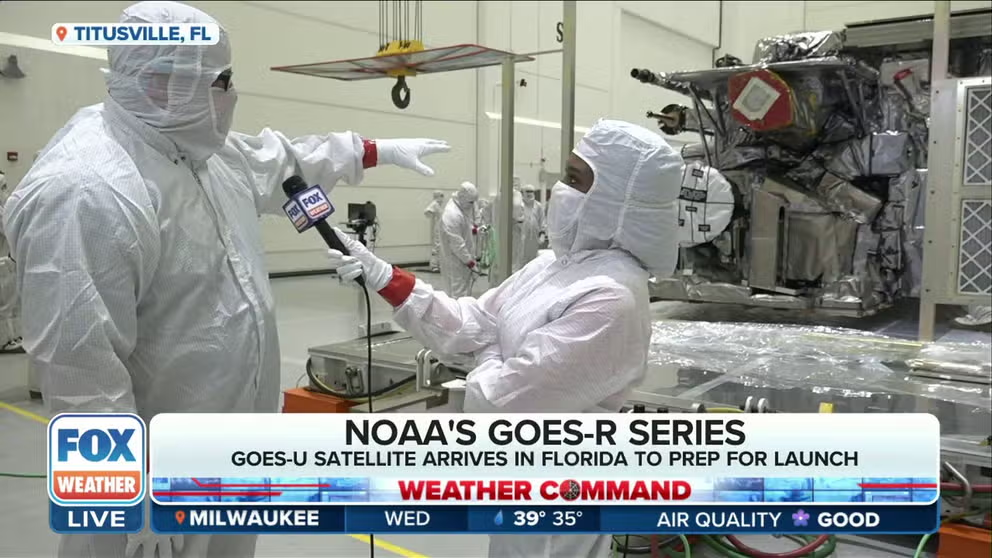New GOES weather satellite launch delayed to May after fuel leak discovered
NASA and SpaceX delayed NOAA's GOES-U satellite launch to May to allow preparation time for a new Falcon Heavy booster after a liquid oxygen leak was discovered during testing. The GOES-U satellite is NOAA's final weather satellite in the GOES R series.
Final GOES-R weather satellite arrives at Kennedy Space Center
NOAA's next weather satellite, and the last of the GOES-R series, arrived in Florida ahead of the April liftoff. FOX Weather's Brandy Campbell is just outside the Astrotech cleanroom where the GOES-U satellite is being prepared to launch.
KENNEDY SPACE CENTER, Fla. – NOAA's GOES-U weather forecasting satellite will launch no earlier than May after a fuel leak was discovered on the SpaceX Falcon Heavy booster being prepared for launch, according to NASA.
The launch of NOAA's next and final satellite in the Geostationary Operational Environmental Satellites (GOES) R series was initially scheduled for April. The new satellite known as GOES-U arrived at the Florida launch facility in January.
NASA and SpaceX delayed the final GOES R series launch to May to allow more preparation time for a new Falcon Heavy booster after engineers discovered a liquid oxygen leak. SpaceX's Falcon Heavy rocket uses three Falcon 9 first-stage boosters to provide the 5 million pounds of thrust to launch off the planet.

Technicians monitor movement and guide NOAA’s Geostationary Operation Environmental Satellite-U (GOES-U) as a crane hoists it on to a spacecraft dolly in a high bay at the Astrotech Space Operations Facility near the agency’s Kennedy Space Center in Florida. (Credit: NASA/Ben Smegelsky)
(NASA)
THE MORE YOU GOES: 7 THINGS TO KNOW ABOUT NOAA'S WEATHER SATELLITES
"The new date allows for additional testing and preparation of a new Falcon Heavy center core booster after a liquid oxygen leak was discovered during routine new booster testing," NASA said.
The school-bus-sized satellite built by Lockheed Martin was flown on a U.S. Air Force C-5M Super Galaxy cargo jet from Colorado to Florida in January, landing on the old space shuttle runway.

The GOES-U satellite is unloaded from a C-5M Super Galaxy cargo transport plane at Kennedy Space Center's Launch and Landing Facility in Florida on Jan. 23, 2024. Photo: Brandy Campbell/FOX Weather
(FOX Weather)
When a new date is set, GOES-U will launch to an orbit 22,000 miles above Earth, providing continuous weather and environmental data for forecasters throughout the Western Hemisphere.
‘IT SAVES LIVES’: LIGHTNING MAPPER CRUCIAL FEATURE FOR GOES SERIES
Once in orbit, GOES-U will be renamed GOES-19. NOAA and NASA launched the third satellite, GOES-18, in the GOES-R series in March 2022.
With a suite of seven instruments, including the Advanced Baseline Imager (ABI), the satellite will monitor hurricanes and weather patterns at high resolution every 30 seconds.
In the next decade, NASA and NOAA are planning for the next-generation weather satellites known as the Geostationary Extended Observations, or GeoXO, satellite system. NOAA and NASA plan to begin launching the GeoXO series in the 2030s.
